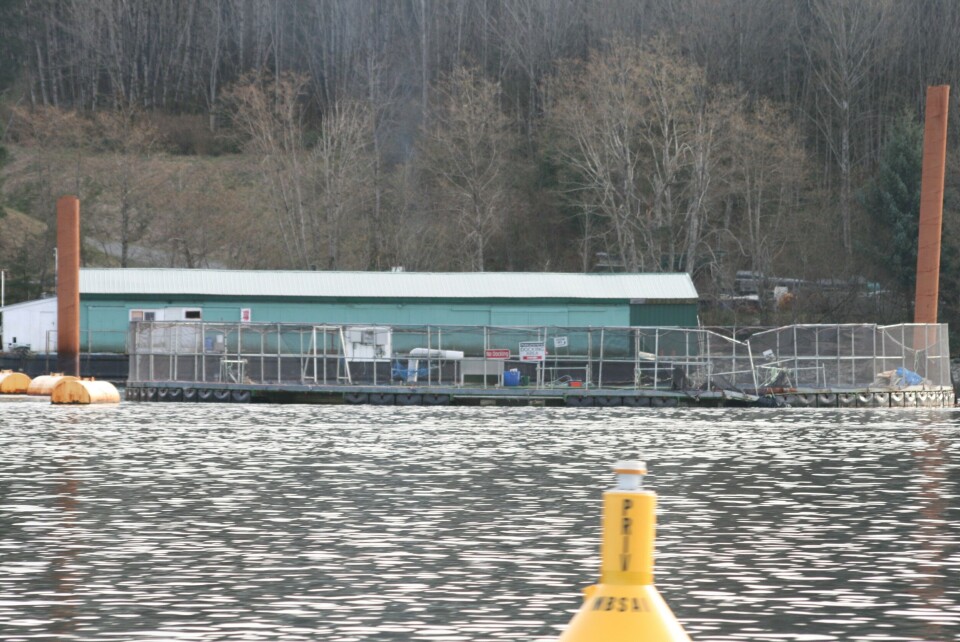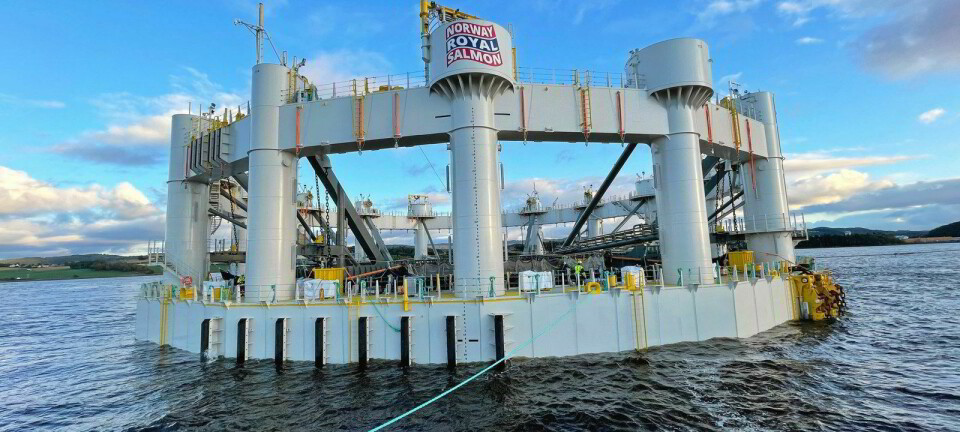
Salmon escape from “closed containment” facility
AgriMarine Industries and its supporters from the environmental community in British Columbia and elsewhere have made a big deal of the assurances that the company’s technology as represented by its 3,000 m³ floating tank near Campbell River on Vancouver Island would transform the conventional ocean-based net pen technology and as a result- “eliminate the risk of escapes”. AgriMarine stated that is has worked with environmental groups such as the David Suzuki Foundation, Living Oceans Society, the Coast Sustainable Trust (an agency that doesn’t fund conventional salmon farming) and the Georgia Strait Alliance.
On January 17, 2011 AgriMarine pronounced that: The launch of Tank 1 at the Middle Bay facility in Campbell River, BC, marks the culmination of years of research and development into alternative sustainable technologies for salmon farming. Intended to address the sustainability challenges faced by conventional net cage fish farming, Tank 1 will showcase the technology for closed containment saltwater salmon aquaculture.
Quoted from the company’s web site; Fish escapes are problematic from both ecological and farm management perspectives. When fish, particularly non-indigenous species, escape they compete for food and potentially for spawning grounds with indigenous species. And; From a farm management perspective, the loss of fish to the ocean environment has a direct impact on revenue and incurs other costs in handling regulatory and public relations issues. The AgriMarine solid-wall containment system eliminates the risk of escapes and predator attacks, thus allowing the farmer to concentrate on rearing the fish.
Fast forward to the 12th of March this year, when a large crack developed in the first of four AgriMarine tanks installed at the CAD$17.4 million (~€11.3 million) Campbell River facility during a winter storm, causing the Chinook salmon in the tank to be emergency harvested at a weight some two kilos smaller than the planned harvest weight. A company statement quoted in a local newspaper said that “Management feels that harvest results prove the commercial value of AgriMarine's unique technology for sustainable aquaculture. It appears that there was no loss of inventory.”
A posting by the Department of Fisheries and Oceans (DFO) this week suggests otherwise- in fact 2,745 Chinook salmon were reported as escaped from the ruptured tank, but no announcement is yet to be found on the publicly traded company’s web site. It is also not clear if AgriMarine had activated a fish recovery plan that for conventional net pen operations require one or more recovery vessels to be available in case of an escape event. The DFO report identified the escape, and described the incident and follow-up actions; “An extreme storm event caused damage to the containment structure at their facility in Middle Bay, allowing some fish, averaging 2.1 kg, to escape. The remaining fish were harvested. Aquaculture Management staff are undertaking a review of the incident and further details will be released when available”.
Many professional marine biologists and other scientists believe that the escape of domesticated Pacific salmon represent a greater risk to the natural populations of salmon in B.C. than the escape of Atlantic salmon which can-not cross-breed with local stocks and which has shown a miserable ability to survive.






















































